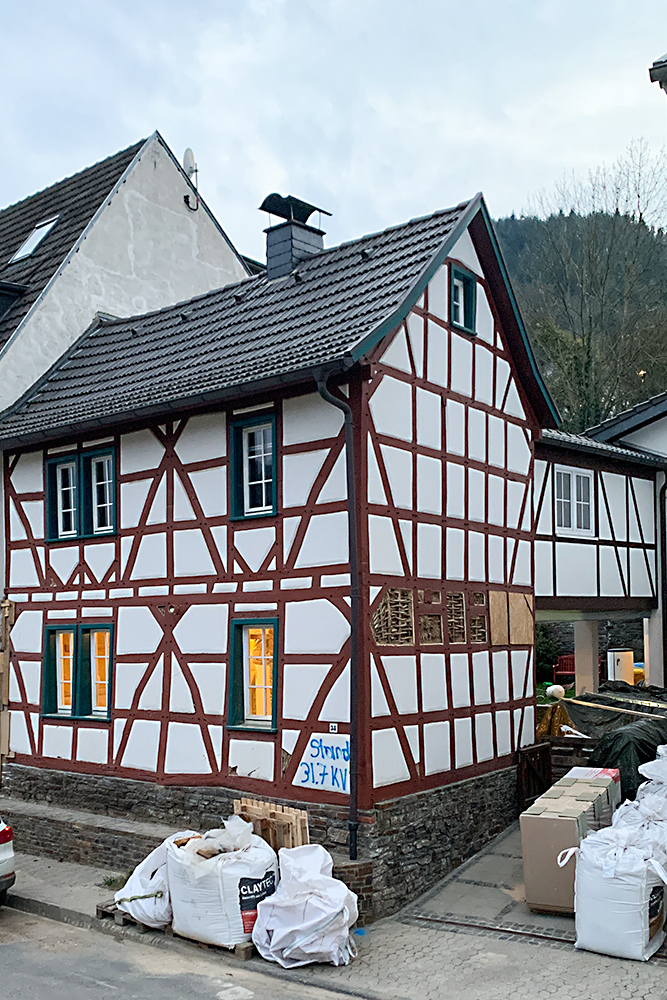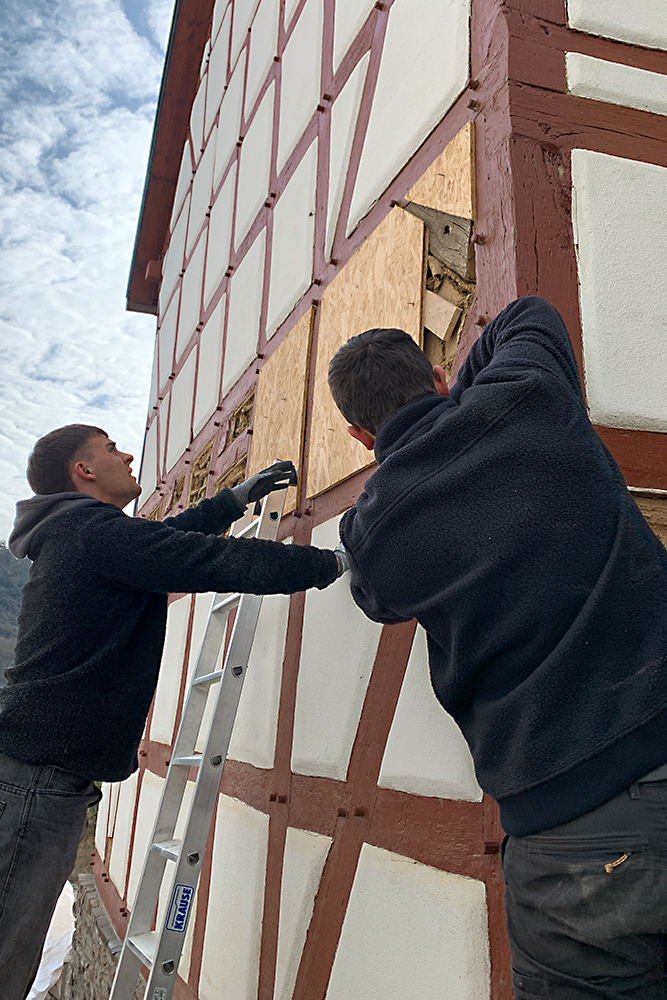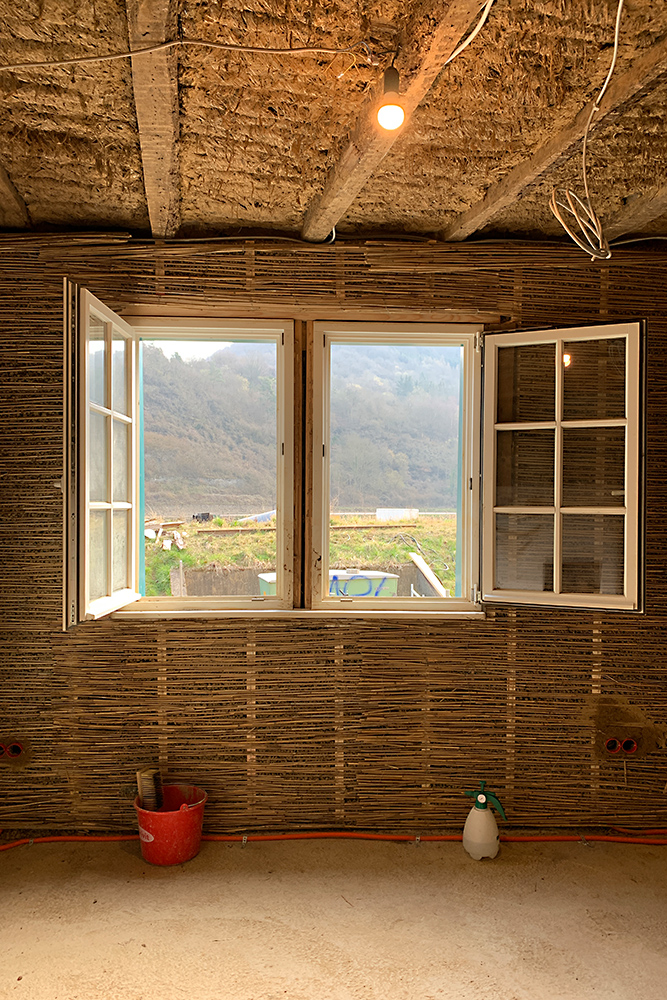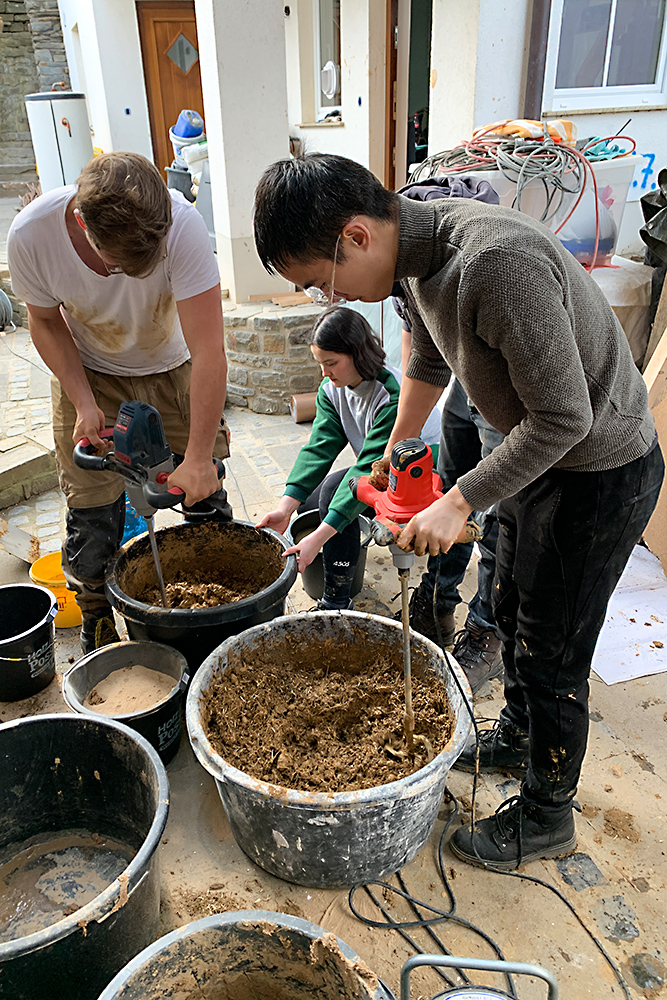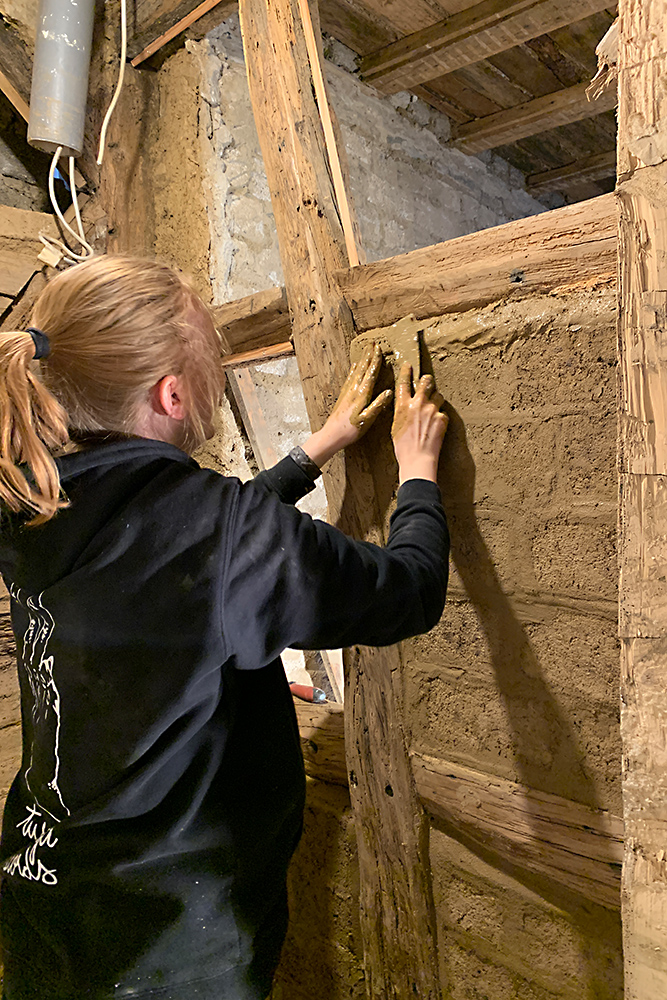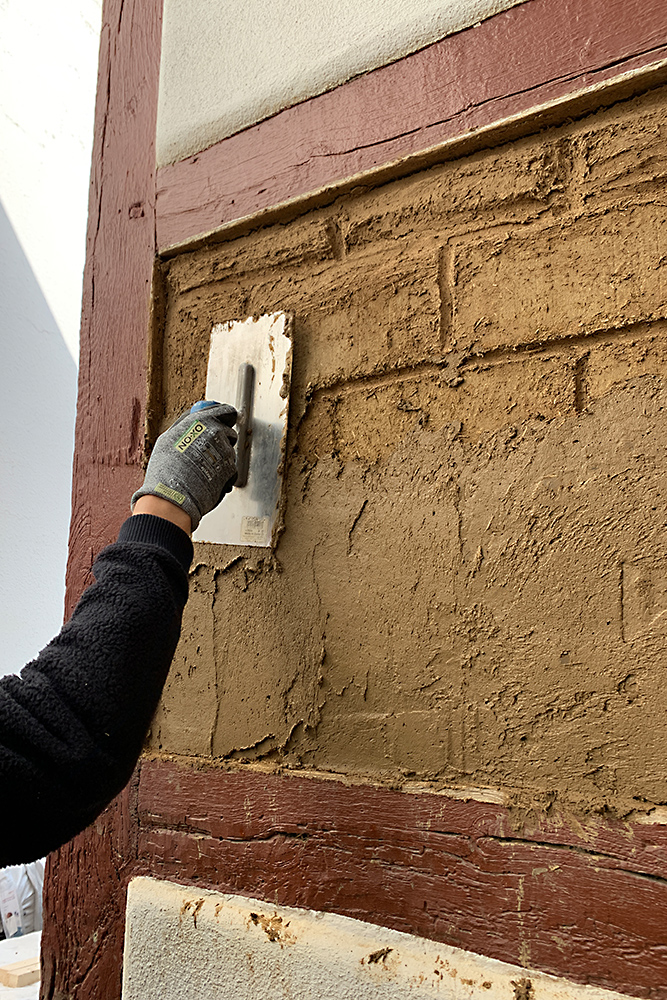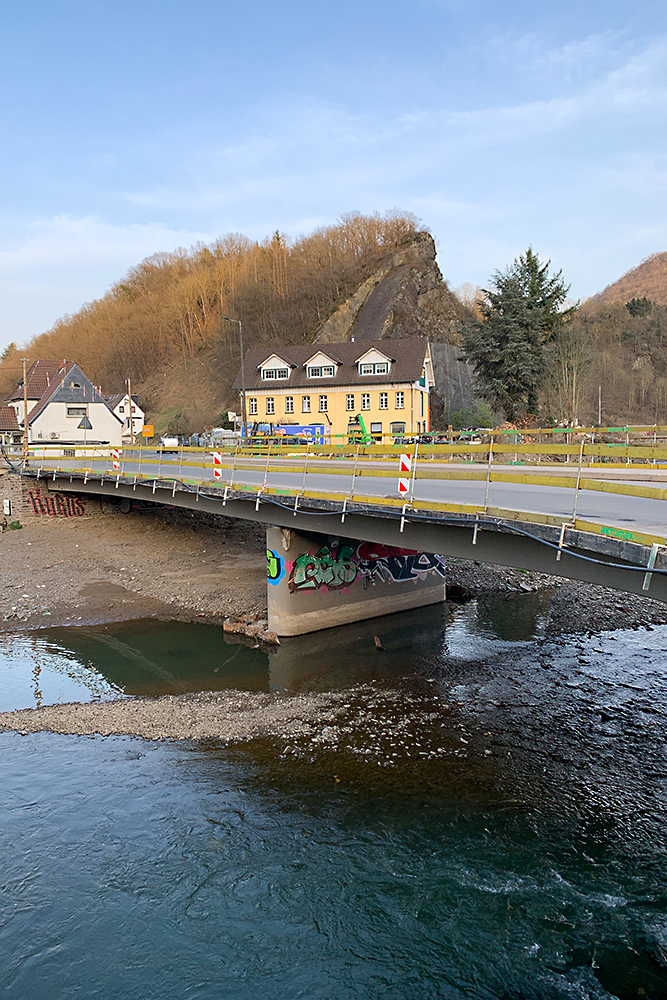Architecture students renovate half-timbered house TU Braunschweig institutes help after floods in the Eifel region
Three quarters of a year after the flood disaster, the consequences are still visible everywhere in the Ahr valley. Reconstruction is underway in the areas destroyed by flash floods and flooding. Architecture students from Technische Universität Braunschweig are also helping. For the second time, a group has travelled to the Eifel to renovate a half-timbered house that was severely damaged by the floods.
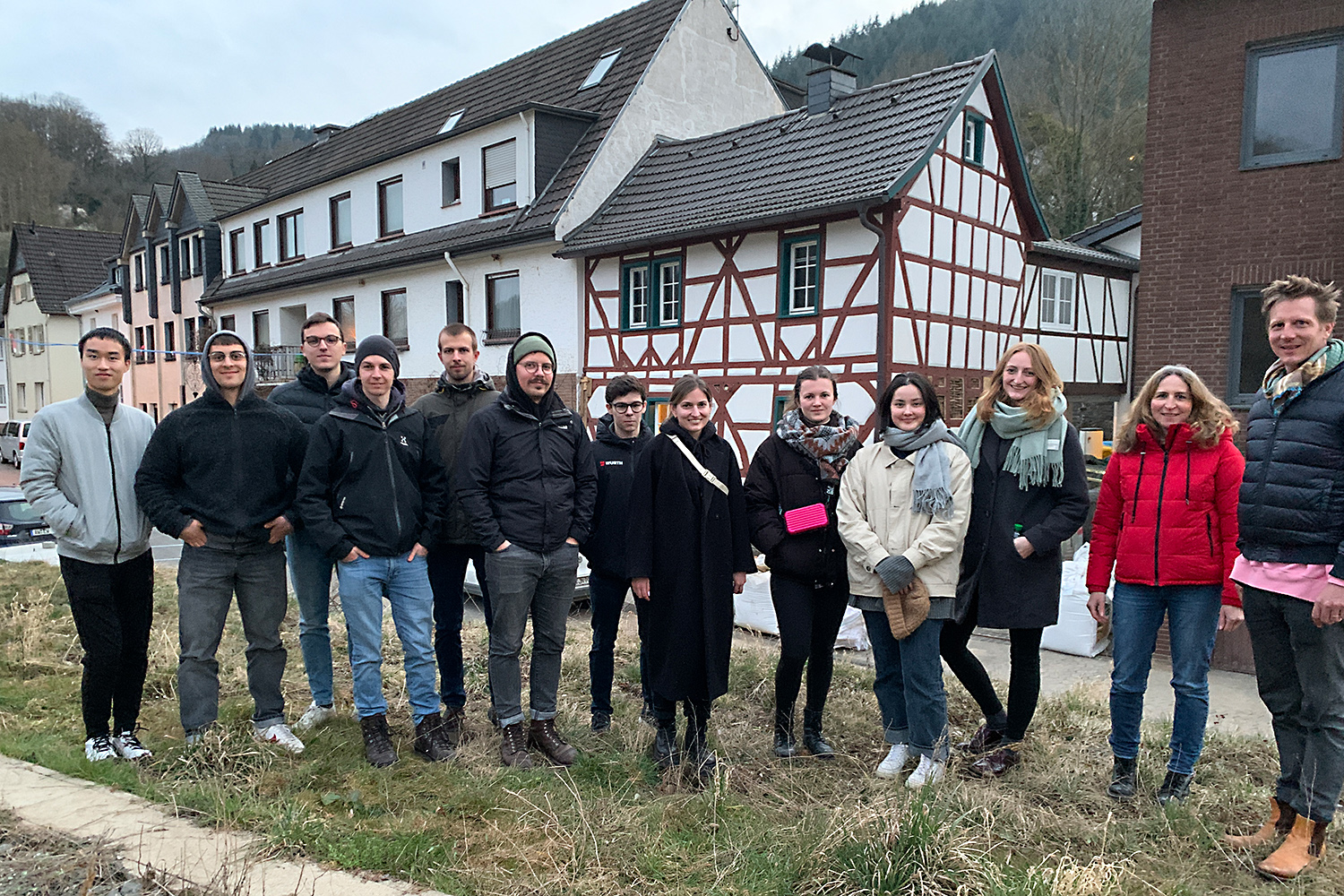
The architecture students with Christina and earthen building expert David Moritz (far right). Photo credits: Chantal Karadag/TU Braunschweig
The water was four metres high in Christina’s house in Kreuzberg on the Ahr. After the flood, it was no longer habitable. Students and staff of the Department of Architecture wanted to change that. The Braunschweig initiative of the Institute for Sustainable Urbanism (ISU) together with the Institute for Building Climatology and Energy of Architecture (IBEA) started in November 2021 via the relief action “Potsdam hilft der Eifel”. So far, the students have been able to make initial repairs to Christina’s house and prepare renovation work. Moisture-intensive measures have had enough time to dry, so that another eleven students have now been able to continue the repairs.
Main house still under construction
Since the last visit of the Braunschweig students, a lot has happened in Kreuzberg: the extension of Christina’s house can be used as a living space again, the kitchen and bathroom have been built in and a living room has been set up on the upper floor. The main house, however, is still in a shell state. So far, only the electrical installation could be provisionally repaired and the house prepared for the further renovation measures. The outside temperatures and drying times finally allowed the infill in the timber frame, which had been partially washed out and washed away by the flood, to be filled again with clay bricks and the walls to be plastered with loam.
Again under the supervision of earthen building expert David Moritz, the students made sporadic repairs to the exterior wall and replaced washed away wraps in the intermediate ceiling. Finally, the wall heating could be installed on the exterior wall that had been insulated with expanded clay in November, and the intermediate ceiling was carefully repaired and plastered. On site, the measures were also supported by another knowledgeable expert, Stefan Funkenberg, from the Eifel-based company Claytec, which also provided the project with a large part of the building material free of charge.
Loam as a building material
The architecture students not only provided active support, but also got to grips with various tools and measuring instruments as well as with loam as a building material. They learned how to mix the right proportions of clay straw, water and other loam mixtures for different types of loam rendering and loam adhesive. Thanks to the help of the people of Braunschweig, Christina’s house will soon be completely ready for occupancy again.
More information can be found on the website www.potsdam-hilft-der-eifel.de and www.sustainableurbanism.org.
The teams include:
Prof. Dr. Vanessa Carlow with Chantal Karadag, Olaf Mumm, Sebastian Schmidt and ISU Team
Prof. Elisabeth Endres with Tobias Pörschke and IBEA Team
Note: The team has agreed on a 2G-Plus arrangement for the collaboration.

